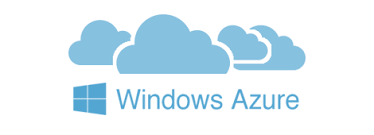Cloud: Windows Azure – SQL Data Service
La piattaforma Cloud Computing di Microsoft, che è del tipo Application/Platform (Saas/PaaS), ha una interessante servizio, SQL Data Service (SDS), rappresenta un database relazionale cloud-based sviluppato con la tecnologia dell’ SQL Server 2008 di cui consiglio di vedere la presentazione in silverlight.

Mediante l’ SDS è possibile facilmente usare un database relazionale RDBMS (quale SQL Server) approfittando dei vantaggi della distribuzione globale dei datacenter di Microsoft destinati allo sviluppo del progetto Azure , pertanto availability, scalability e security.
SQL Data Service Features
- Creating, accessing and manipulating tables, views, indexes, roles, stored procedures, triggers and functions
- Insert,Update, and Delete
- Constraints
- Transactions
- Temp tables
- Query support
- Basic functions (aggregates, math, string, date/time)
- A subset of the existing SQL built-in stored procedures and system views
- Ado.Net
- ODBC
- PHP
- Support for running SQL configuration scripts via SQLCMD and SQL Query Analyzer from within SQL Server Management Studio
- Support for Visual Studio and SQL Server Management Studio
- Support for SQL Server Management Studio, SQL Server PowerShell and programmatic access via SQL Server Management Objects (SMO)
- Support for friction free provisioning of Logical Servers and Databases through the SQL Data Services account portal
- SDS supports the SQL authentication modelRedundant copies of user database
- User authenticated by standard SQL logins
- Login map to user inside the database
- Current SQL USER and ROLE mechanisms continue to work with the database. GRANT/DENY/REVOKE permissions of SQL objects to USER/ROLE
- Redundant copies of user databases for fast failover and high availability in case of failure
- Automatic load balancing for optimal resource utilization and performance
- Scale out with multiple databases and partition-aware application
- Automatic system backup for data protection
- A subset of existing SQL manageability facilities will be available
Come si è potuto notare dall’elenco delle features, è come avere installato un proprio server di rete database SQL Server ed amministrarlo con i soliti strumenti di sempre (Management Server, SQL Analyzer,Visual Studio) usare tutte le feature classiche di un SQL Server (functions, views, stored procedures, tables, indexes. transactions,etc), ma con la potenza e l’affidabilità di una infrastruttura scalabile di una Cloud Computing.

Ovviamente non è pensabile di usare questo servizio senza appoggiare le nostre interfacce SW agli altri servizi di Windows Azure come il .NET Services perchè le lantenze di internet farebbero perdere i vantaggi di usare un RDBMS Cloud Based, mentre stando negli stessi datacenter con connettività dedicata, si ha il massimo vantaggio in performance.
Per ora il servizio è limitato per ogni utente ad un database di massimo 10GB, che non è poco, il modello di pagamento è quello classico a consumo.
E’ sicuramente un servizio molto professionale e si pone all’avanguardia tra gli attuali servizi database in Cloud, sarebbe da testare per grossi portali con molto traffico.








Azure: il Cloud Computing secondo Microsoft è realtà | VMengine Business Blog
Marzo 8, 2010[…] SQL Azure: Per avere maggiori informazioni leggete il nostro vecchio post […]